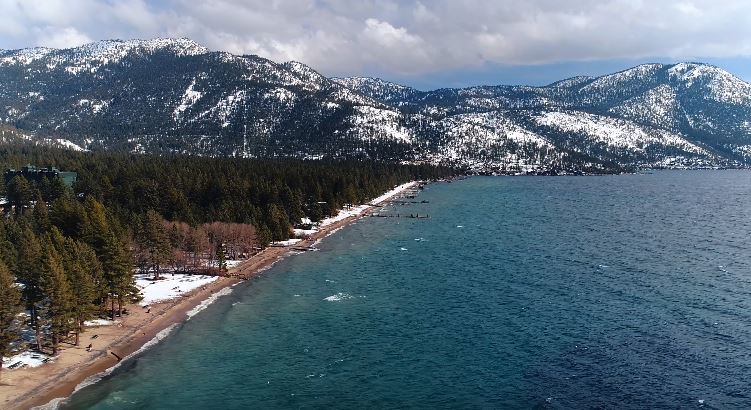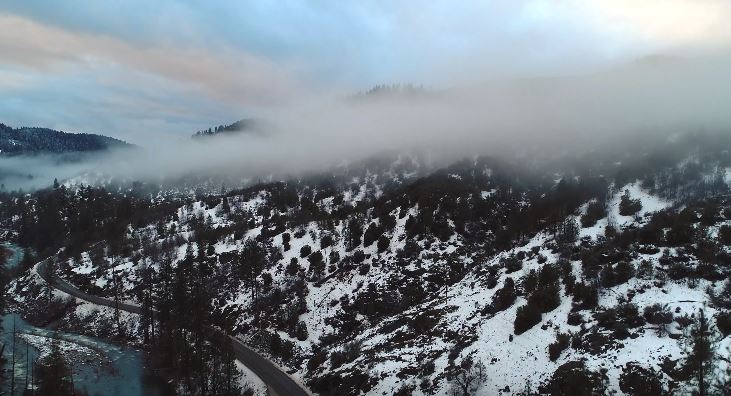The Sierra Nevada mountain range is in the Western United States, between the Central Valley of California and the Great Basin. The vast majority lies in the state of California, although the Carson Range spur lies primarily in Nevada, here we will let you know well about the Sierra mountains.
The Sierra Nevada, also known as Sierra Nevadas, major mountain range of western North America, running along the eastern edge of the U.S. state of California. Its huge mass lies between the Central Valley depression to the west and the Basin and Range to the east. Extending more than 400 kilometers northward from the Mojave Desert to the Cascade Range of northern California and Oregon, the Sierra Nevada mountains vary from 80 miles wide at Lake Tahoe around 50 miles wide in the south. Its magnificent skyline and stunning landscapes make it the most beautiful physical features of the United States. Biologically, it is home to the largest trees in the world ie the giant sequoias. As a recreation center, its facilities prove a magnet to the inhabitants of the huge urban areas of California, and it has importance as a source of power and water.
The Sierra Nevada range is an example of how the human occupation and use of an area can modify its landscape. First mining, then logging and tourism have done more in 150 years to alter the flavor of the mountain scenery in several areas than the actions of ice and water over millennia.
Physical Features of Sierra Nevada Mountains
Physiography
The Sierra Nevada is an asymmetrical range with its crest and high peaks definitely toward the east. The peaks range from 11,000 to 14,000 feet above sea level, with Mount Whitney, at 14,494 feet, the highest peak in the United States.
Much of the rock is granite or relative of granite. There are dividing bands of metamorphosed sedimentary rock, that is left of a once extensive sedimentary basin and some areas of extrusive rock, especially from Lake Tahoe northward at the northern limit of the Sierras, which merge with the volcanic rocks of the Cascades.
Know: Interesting Facts, History about California
Geology
It has been recognized that the Sierra Nevada is an upfaulted, tilted block of the Earth’s crust. A major fault bounds the block on the east, and it was along the great mass that became the Sierra Nevada was uplifted and tilted westward which explains the asymmetry of the range. As the block uplifted the abrupt, east-facing hillside was cut into by the erosive action of wind, rain, temperature change, frost, ice, and a series of steep-gradient canyons developed. On its western side, streams flow more gently down the geologic dip slope, creating massive alluvial fans that supersede into the Central Valley of California. Though the massive uplift began millions of years ago and much of it occurred in the past two million years. The present-day relief of 10,000 to 11,000 feet along the eastern slopes in the southern Sierra Nevada authenticate to the tremendous uplift.

Drainage and glaciation
The gentler west-facing slope has been chopped by a series of streams, longer than those of the eastern slope. Such rivers as the Yuba, American, Mokelumne, Merced, and Kern originate in deep valleys carved largely by the glaciers into the predominant granite and some volcanic. But the Kern drain either into the Sacramento River in the Central Valley on the north or into the San Joaquin on the south, their waters reaching the Pacific Ocean through these two rivers at San Francisco Bay. Until the water got diverted for irrigation during the early 20th century, the Kern River drained into the Buena Vista Lake basin, south of the San Joaquin River.
During the Pleistocene Epoch, the river valleys were covered by great expanses of ice. Glacial climates developed and got dissipated at least twice, and every time the excessive snows builts the snow and ice fields and deep glaciers. The ice carved the U-shaped valleys down the elevation of about 5,000 feet on the western slopes. So much ice existed on the mountaintops that an ice cap was formed as the glaciers can be consoled. This cap extended almost 200 miles from the Lake Tahoe in the north to the southern high Sierra near Mount Whitney.
Read: Best Time to Visit California
Plantlife
Generally speaking, there are five distinct vegetation zones on the western slopes. The lower foothills support the deciduous trees and shrubs, as well as the evergreen interior live oak, whereas the Black oak, Ponderosa pine, and incense cedar occur in the upper foothills. The montane forest constitutes the primary commercial timber zone, contains Douglas fir, red fir, Jeffrey pine, and the celebrated big tree, or giant sequoia, for which Sequoia National Park was designated a public preserve. Lodgepole pine, mountain hemlock, Sierra juniper, and western white pine are among the subalpine forest. The arid eastern slopes support the sagebrush, bitterbrush, juniper, and aspen.
Animal life
The large mammals readily identified with mountainous regions became less abundant in the Sierra Nevada in the 20th and early 21st century, in part because of increased human presence. Black bear inhabits the larger area than a more reclusive grizzly. There is evidence that the mountain lion population is making a comeback, with increasing human occupancy, poses a potential problem. Now Mountain sheep are found only in the southern part of the range. Smaller mammals of the lower- and middle-elevation forests include the American badger, striped skunk, bobcat, and northern flying squirrel. The fisher and the Wolverine are rare.
The birdlife of the Sierra Nevada includes the Brewer blackbird, California horned lark, the California quail, canyon wren, and roadrunner of the chaparral and foothills, mountain chickadee, spotted an owl, and band-tailed pigeon in the timber zone, and Hammond flycatcher in the upper forests. The pine grosbeak and white-toed woodpecker are the birds of the subalpine zone.

The People And Economy
The American Indian inhabitants of the Sierra Nevada were divided into five groups: the Yokut, Sierra Miwok, and Maidu on the western slopes and the Owens Valley Paiute and the Washoe on the eastern. The hunting-and-gathering economy of these peoples had a little effect on the landscape other than locally through fires set to catch the game. The first Europeans in the region were Spanish explorers and missionaries, who visited Alta California beginning in the 1700s and their impact on the Sierra Nevada also was negligible. In the early 1800s, Jedediah Smith, Joseph Walker, and others celebrated the American hunters and fur trappers passed through the region. In the mid-19th century, the pristine silence of the Sierra Nevada was ended as prospectors came, stayed, and stamped their mark on the region.
Don’t Miss: The Most Beautiful Places in California
As you can see that here we have seen information related to Sierra Nevada mountains which explains the brief information regarding Sierra Nevada mountain range. Hope you will love reading this article which will help you to explore California, also you can share your views with us regarding the explained content in the form of a comment.
The post Discover About Sierra Nevada Mountains, California appeared first on World Tour & Travel Guide, Get Travel Tips, Information, Discover Travel Destination | Adequate Travel.